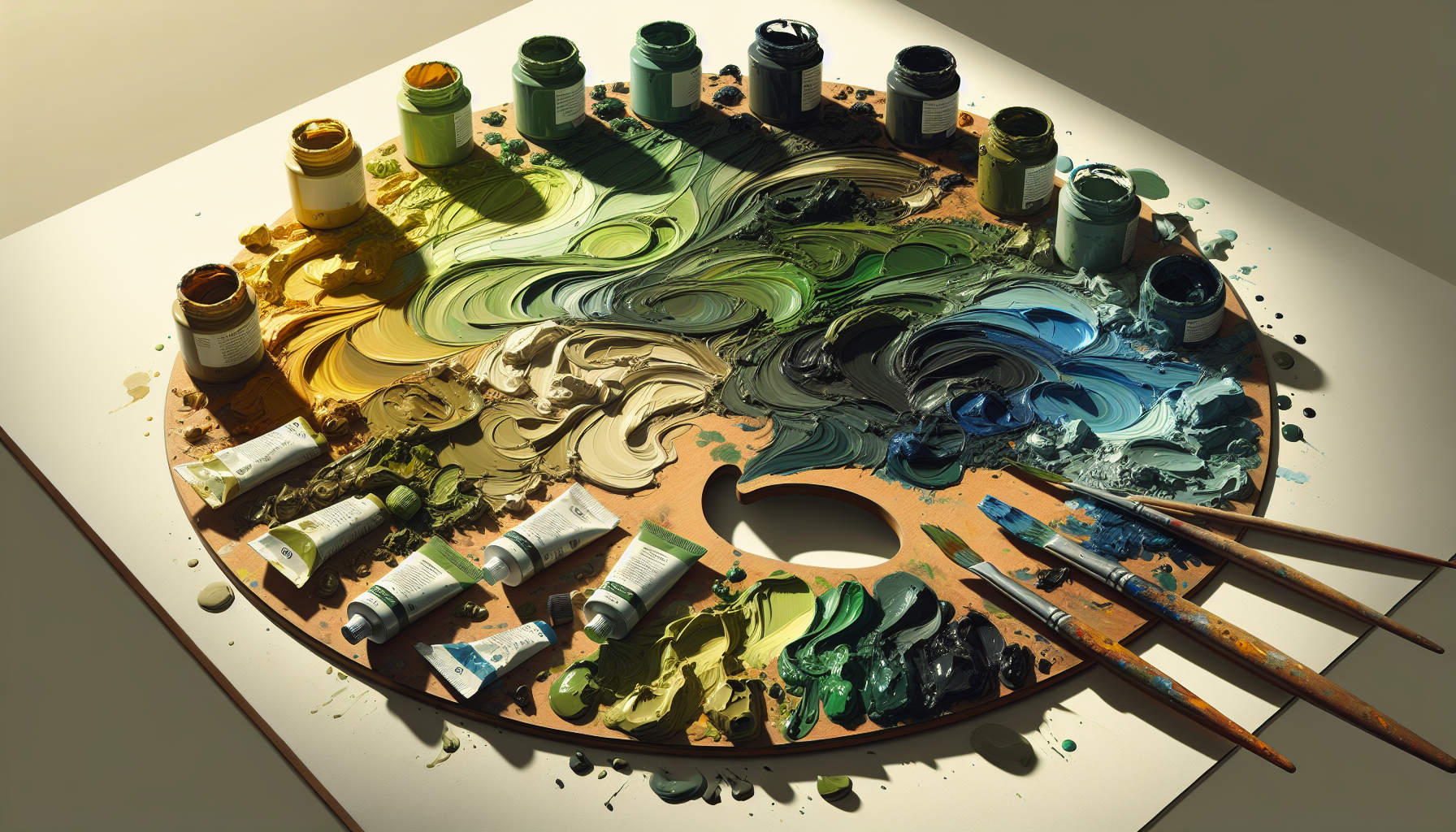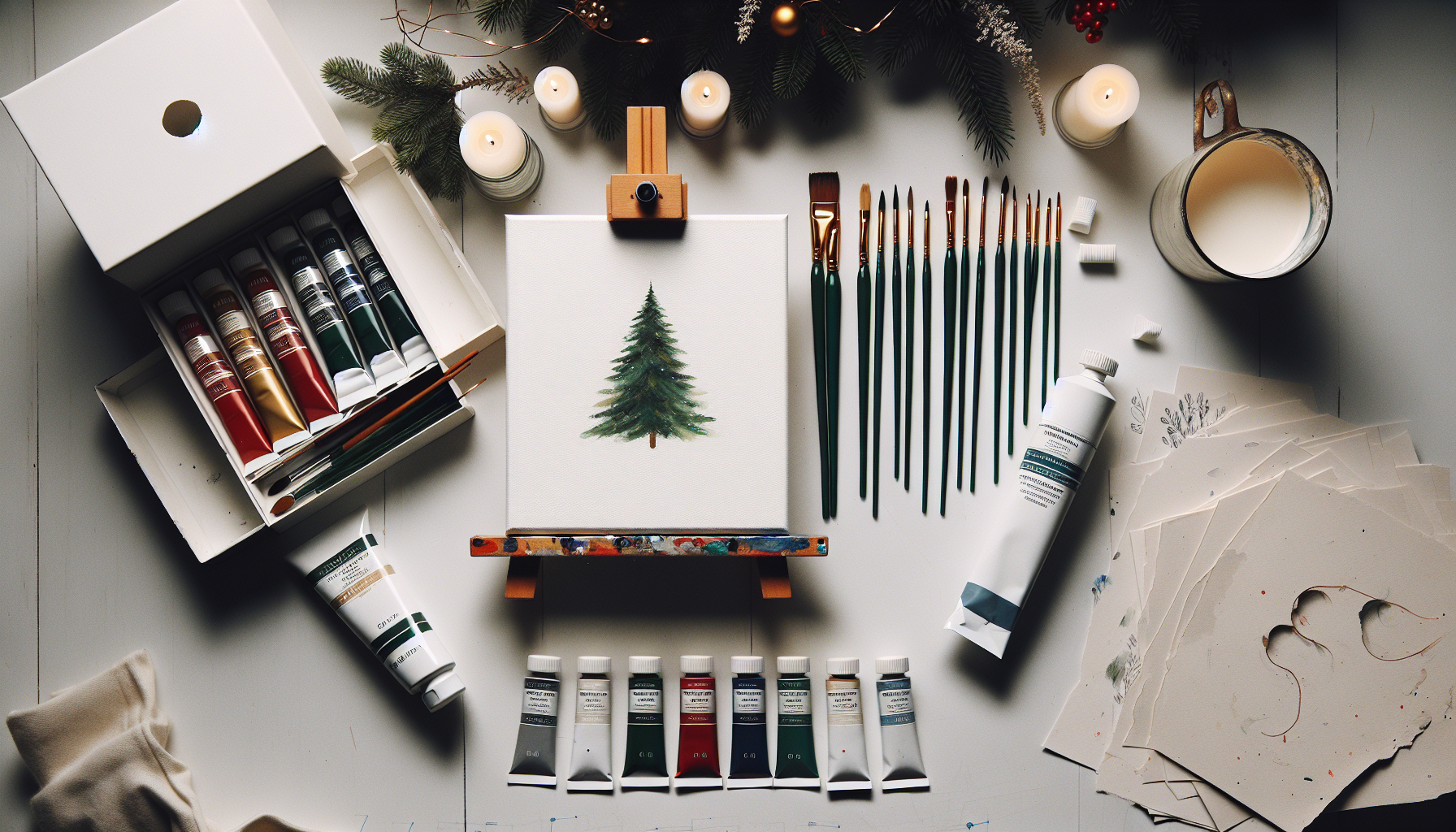Have you ever wondered if it is possible to use polyurethane over acrylic paint? Well, look no further because this article will provide you with all the information you need. Whether you are a professional artist or a DIY enthusiast, knowing the compatibility of these two materials can greatly impact your projects. Discover the dos and don’ts of using polyurethane over acrylic paint, learn about the potential risks and benefits, and gain confidence in your artistic endeavors.

Can You Use Polyurethane Over Acrylic Paint
If you’re considering adding a protective coating to your acrylic paint project, you might be wondering if polyurethane is a suitable option. Polyurethane is a popular choice for finishing wood surfaces, but can it be used over acrylic paint? In this article, we’ll explore the compatibility between polyurethane and acrylic paint, as well as the necessary steps to ensure a successful application. So, let’s dive in and discover whether using polyurethane over acrylic paint is a good idea!
Understanding Polyurethane
What is Polyurethane?
Polyurethane is a versatile and durable coating that is widely used for protecting surfaces, especially wood. It is a polymer material that forms a hard, clear, and glossy finish when dried. Polyurethane creates a protective barrier against moisture, chemicals, and UV rays, making it an excellent choice for enhancing the longevity of various projects.
Types of Polyurethane
There are two main types of polyurethane: oil-based and water-based. Oil-based polyurethane provides a rich and amber appearance, while water-based polyurethane dries clear and is less likely to yellow over time. Both types offer excellent durability and protection, but it’s essential to consider the specific requirements of your project when choosing between the two.
Benefits of Using Polyurethane
Using polyurethane as a protective coating offers several benefits. It provides a durable finish that can withstand wear and tear, making it ideal for surfaces that undergo heavy use. Polyurethane also enhances the natural beauty of wood surfaces, giving them a glossy and professional-looking finish. Additionally, it provides resistance against water, chemicals, and UV rays, ensuring your project stays protected for years to come.
Understanding Acrylic Paint
What is Acrylic Paint?
Acrylic paint is a versatile and popular medium used by artists, crafters, and DIY enthusiasts. It consists of pigment suspended in an acrylic polymer emulsion, which gives it its characteristic quick-drying properties. Acrylic paint offers vibrant colors, a smooth and even finish, and the ability to be used on various surfaces, including canvas, wood, metal, and more.
Properties of Acrylic Paint
Acrylic paint possesses several notable properties that make it a preferred choice for many artists and home improvement projects. It dries quickly, allowing for faster completion of projects compared to other paint types. It also has excellent adhesive properties, sticking well to various surfaces with proper preparation. Furthermore, acrylic paint is water-based, making it easy to clean up with water and soap.
Advantages of Using Acrylic Paint
The advantages of using acrylic paint are numerous. Its fast drying time allows for multiple layers to be applied within a short period, making it ideal for projects that require swift completion. Acrylic paint is also known for its color vibrancy and excellent lightfastness, meaning your artwork or painted surface will retain its original hues even when exposed to sunlight. Additionally, acrylic paint is available in a wide range of colors, giving you ample options for creative expression.
Compatibility between Polyurethane and Acrylic Paint
Evaluating the Surfaces
Before applying polyurethane over acrylic paint, it’s crucial to evaluate the condition of both surfaces. Make sure that the acrylic paint has dried completely and has adhered well to the surface. A properly cured acrylic paint layer provides a solid foundation for the polyurethane to bond with. Similarly, ensure that the polyurethane is compatible with the material beneath the acrylic paint, such as wood or metal.
Adhesion and Bonding
To ensure a strong bond between polyurethane and acrylic paint, proper surface preparation is essential. Cleaning the surface thoroughly is the first step. Remove any dirt, dust, or grease that may interfere with adhesion. Next, lightly sand the acrylic paint to create a slightly rough texture, which helps the polyurethane adhere better. Applying a primer designed for both acrylic paint and polyurethane can further enhance adhesion and create a stronger bond between the layers.

Preparing the Surface
Cleaning the Surface
Cleaning the surface before applying polyurethane is crucial for achieving a smooth and flawless finish. Wipe away any dust or debris using a soft, lint-free cloth. If the surface has stubborn stains or residues, clean it with a mild detergent solution or a dedicated surface cleaner appropriate for the material. Allow the surface to dry completely before proceeding to the next step.
Sanding and Priming
Sanding the acrylic paint surface lightly helps create a better bond between the paint and polyurethane. Use a fine-grit sandpaper or sanding block to gently scuff the paint, ensuring not to sand through to the underlying material. This step promotes adhesion and helps the polyurethane adhere more effectively.
After sanding, it is recommended to apply a primer designed for both acrylic paint and polyurethane. The primer acts as an additional layer of adhesion and improves the overall durability of the finish. Follow the manufacturer’s instructions for the specific primer you choose, including the appropriate drying time before applying the polyurethane.
Application Process
Applying Polyurethane over Acrylic Paint
When applying polyurethane over acrylic paint, it’s crucial to do so in thin and even layers. The polyurethane should be spread smoothly, without pooling or drips, to ensure a flawless finish. Use a clean, high-quality brush or a sprayer specifically designed for polyurethane application, depending on your preference and the size of the project.
Brushing or Spraying
Brushing and spraying are two common methods for applying polyurethane. Brushing is suitable for smaller surfaces or projects that require precision. Select a high-quality brush with synthetic bristles, as natural bristles can sometimes shed and affect the finish. Alternatively, spraying is an excellent option for larger surfaces, allowing for a faster and more even application. Ensure proper ventilation and follow the manufacturer’s instructions when using a sprayer.
Number of Coats
To achieve the desired level of protection, multiple coats of polyurethane may be necessary. Applying two to three thin coats ensures adequate coverage and durability. Remember to allow each coat to dry completely before applying the next. Sand lightly between each coat to smoothen the surface, remove any imperfections, and promote strong adhesion between the layers.

Drying and Curing Times
Drying Time
Polyurethane dries to the touch relatively quickly, usually within a few hours. However, it’s essential to understand that the drying time may vary based on various factors, such as temperature, humidity, and the number of coats applied. To avoid damaging the finish, avoid exposing the freshly applied polyurethane to any excess moisture or pressure until it has fully dried.
Curing Time
While polyurethane may dry quickly, it takes longer to fully cure and reach its maximum hardness and durability. Curing time can range from a few days to several weeks, depending on the specific product and environmental conditions. To protect the finish during the curing process, avoid subjecting it to heavy use or harsh conditions until it has fully cured.
Factors Affecting Drying and Curing
Various factors can influence the drying and curing times of polyurethane over acrylic paint. Temperature and humidity levels play a significant role, with optimal conditions typically being around 70°F (21°C) and 50% humidity. Lower temperatures and high humidity can prolong the drying and curing processes. Additionally, the type and brand of polyurethane used may have specific recommendations regarding drying and curing times.
Considerations and Tips
Testing on a Small Area
Before applying polyurethane over acrylic paint on the entire surface, it’s wise to perform a test on a small, inconspicuous area. This allows you to evaluate the adhesion, compatibility, and overall appearance of the finish. If there are any issues or concerns, you can identify and address them before committing to the entire project.
Choosing the Right Polyurethane
Selecting the appropriate type of polyurethane is crucial for achieving the desired results. Consider the specific requirements of your project, such as the level of protection needed, the desired finish (glossy or matte), and the compatibility with the underlying acrylic paint and surface material. Consult with professionals at your local hardware store or refer to the manufacturer’s recommendations to ensure you’re using the right polyurethane for your project.
Maintaining the Finished Surface
Once you’ve successfully applied polyurethane over acrylic paint, proper maintenance is key to preserving the finish. Avoid using harsh chemicals or abrasive cleaners that can damage the protective coating. Instead, clean the surface regularly using a mild detergent, water, and a soft cloth or sponge. Additionally, consider using coasters or protective pads for any objects that may come into prolonged contact with the surface to prevent scratches or other damage.

Potential Issues and Solutions
Yellowing or Ambering
One potential issue with using polyurethane over acrylic paint is the risk of yellowing or ambering over time, especially when using oil-based polyurethane. This can alter the appearance of the acrylic paint and affect the overall aesthetics of the project. To mitigate this problem, consider using a water-based polyurethane, as it is less likely to yellow. Additionally, selecting a polyurethane with UV inhibitors can provide added protection against yellowing.
Bubbles or Air Trapped
Air bubbles getting trapped in the polyurethane during application can lead to an uneven or bumpy finish. To avoid this issue, ensure that you mix the polyurethane thoroughly according to the manufacturer’s instructions. Apply the polyurethane in thin and even coats, avoiding excessive brushing or spraying, which can create air bubbles. If bubbles do appear, gently blow on them or lightly pass a heat gun or hairdryer set to a low setting over the surface to help them dissipate.
Sanding and Recoating
If you encounter any imperfections or flaws in the polyurethane finish, sanding and recoating can help rectify the situation. Lightly sand the affected area until smooth, wipe away any dust, and apply another thin coat of polyurethane. Sanding between coats helps create a level surface and ensures proper adhesion. Take care not to sand through the polyurethane and into the underlying acrylic paint, as this may require more extensive repair work.
Conclusion
In conclusion, using polyurethane over acrylic paint is possible, but it requires proper surface preparation, adhesion evaluation, and an understanding of the potential challenges and solutions. By following the steps outlined in this article and selecting the appropriate materials, you can successfully apply polyurethane over acrylic paint to enhance the protection, durability, and aesthetic appeal of your projects. Remember to test on a small area, choose the right polyurethane, and maintain the finished surface to enjoy a beautiful and long-lasting result.




